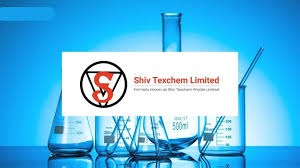Lupin Ltd presented Phase 1 data on its STING agonist LNP3693 at ESMO 2025, targeting advanced solid tumors and lymphomas. The study showed early signs of immune activation and safety, marking progress in Lupin’s oncology pipeline. LNP3693 may enhance cancer immunotherapy through innate immune stimulation.
Lupin Ltd has announced the presentation of Phase 1 clinical data for its investigational STING agonist, LNP3693, at the European Society for Medical Oncology (ESMO) 2025 conference. The study marks a significant step in Lupin’s oncology pipeline, targeting advanced solid tumors and lymphomas through immune system activation.
Key Highlights From The Study
- LNP3693 is a small molecule STING (Stimulator of Interferon Genes) agonist developed to enhance anti-tumor immune responses.
- The Phase 1 dose escalation trial evaluated safety, tolerability, and preliminary efficacy in patients with advanced or metastatic solid tumors and hematologic malignancies.
- Conducted in India, the trial included patients with refractory cancers, aiming to assess immune activation and tumor response.
- Early data suggest manageable safety profiles and signs of immune modulation, supporting further clinical development.
Scientific Significance
STING agonists represent a promising class of immunotherapies designed to stimulate innate immunity and promote tumor clearance. LNP3693’s mechanism involves triggering interferon pathways, potentially enhancing the effectiveness of checkpoint inhibitors and other cancer treatments.
Pipeline And Future Outlook
Lupin’s oncology division is expanding its focus on immuno-oncology, with LNP3693 positioned as a key candidate. The company plans to initiate Phase 2 trials pending regulatory feedback and further safety validation. The drug’s dual indication for solid tumors and lymphomas broadens its therapeutic potential.
Industry Response
Experts at ESMO 2025 noted the relevance of STING agonists in reshaping cancer immunotherapy. While still in early stages, LNP3693’s progress reflects Lupin’s commitment to innovation in high-impact therapeutic areas. Analysts expect increased R&D investment and potential partnerships as the program advances.
Sources: Larvol Delta, Synapse Patsnap







